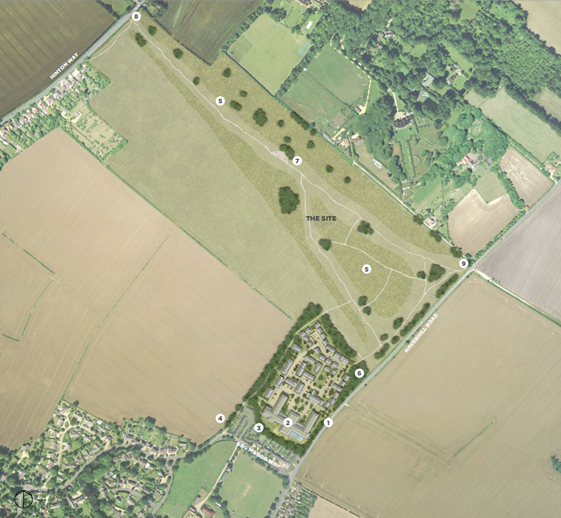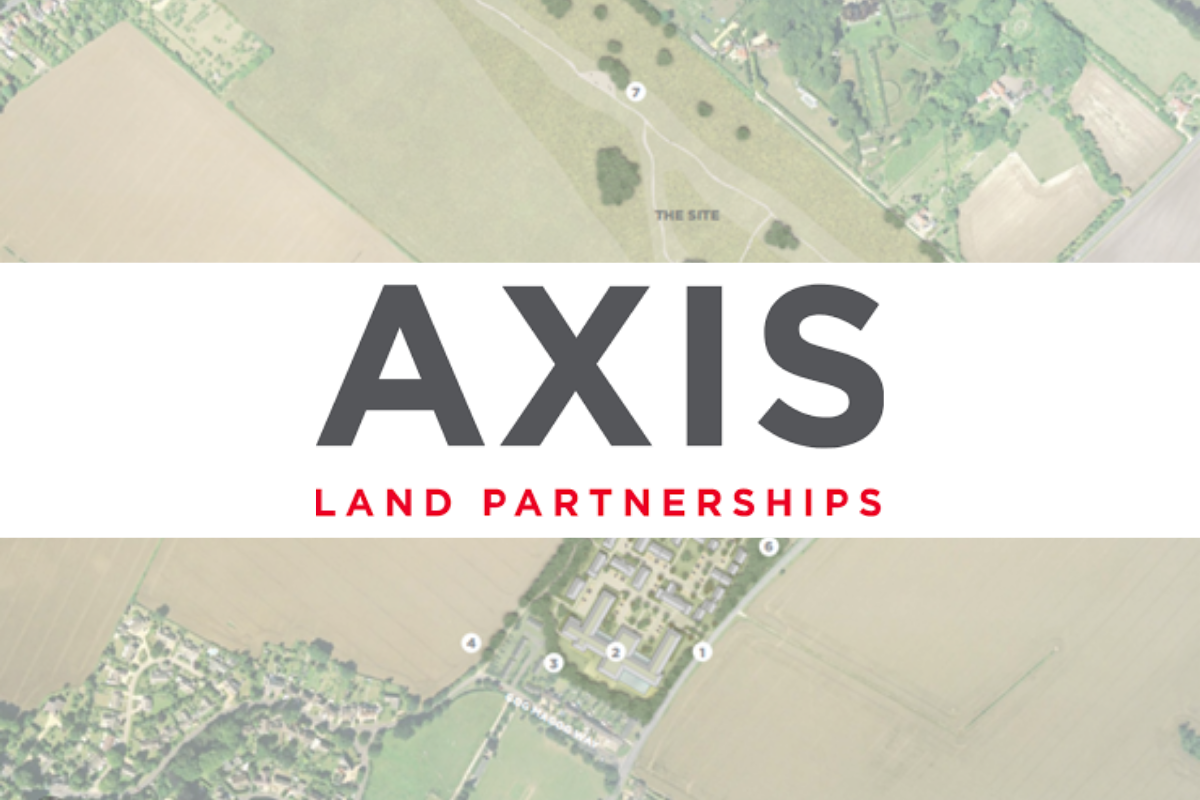Securing planning permission on a green belt site is never an easy process.
Which is why land promotion and development company Axis Land Partnerships sought the support of the team at Carterwood in doing just that. Just days before the new year, planning permission for a retirement care village of up to 17,825 sq. m in the village of Stapleford, South Cambridgeshire, was granted on a site within the green belt.
Green belt land is, rightly so, highly protected. Green belt areas are essential in the prevention of urban sprawl by keeping land permanently open and their permanence is a key characteristic. With the exception of schemes that comply with the NPPF, any development within a green belt area will require either the release of that portion of land from the green belt through boundary adjustments, or proposals will need to demonstrate ‘very special circumstances’ in order to obtain planning permission.
Demonstrating such circumstances, where the benefits of the development clearly outweigh any harm to the green belt, can be challenging and may require specialist analysis to determine.
‘When considering any planning application, local planning authorities should ensure that substantial weight is given to any harm to the green belt. “Very special circumstances” will not exist unless the potential harm to the green belt by reason of inappropriateness, and any other harm resulting from the proposal, is clearly outweighed by other considerations.’
National Planning Policy Framework (NPPF), para 148, page 43
A plethora of very special circumstances that may be applied to a proposed development exist, ranging from unmet housing need plus social infrastructure, a need for a strategic transport links, enabling the conservation of a listed building, to economic and community benefits; however, the circumstance that will be most appropriate will vary from site to site.
Housing need alone, including specialist housing for older people, will rarely amount to very special circumstances, but accompanied by other benefits and considerations, it can be a solid element at appeal, something that Carterwood are proud to progress.
‘Carterwood’s sector specialism and outstanding planning and appeal track record identified them as our consultant of choice. Bringing Carterwood on board at initial planning stage has been invaluable, enabling them to offer a consistently high level of support throughout the process and expertly defend the care need and alternative site case at appeal. Obtaining planning permission on the green belt is a substantial challenge, and Carterwood played a vital role in supporting us reach this landmark achievement.’
Andrew Adams, Land director at Axis Land Partnerships
Let’s take a closer look
Spotlight: Stapleford
The developer:
Axis Land Partnerships are part of The McAlpine Group, a family business with over 150 years of experience in building successful partnerships to promote land for development. Axis pride themselves on working with local communities to gain the best outcomes for local places, all whilst creating mutually beneficial partnerships that maximise land value.
The scheme:
A retirement care village (use class C2) of up to 17,825 sq. m comprising housing with care accommodation, with communal health, wellbeing and leisure facilities, public open space, landscaping, car parking and access. Alongside the retirement care village site is the creation of a countryside park for use by the public, which will bring with it many associated benefits to the landscape, environment and biodiversity.

Source: Greater Cambridge Shared Planning
How did Carterwood support?
Planning
Axis identified the opportunity to develop the site at Stapleford several years ago, at which point Carterwood were invited to provide headline market analysis to inform decision-making as early as possible during the development process. This concise headline report provided expert, independent analysis of the viability of the proposed scheme.
At initial planning, Carterwood provided:
- Planning need assessment; a detailed report that independently assesses the need for private extra care or care village units or care home beds
- Alternative site assessment; an independent report to demonstrate that a site is the only suitable location for the proposed development, having clearly, concisely, and thoroughly evaluated all alternative sites in the local authority area and market catchments.
A planning application for the proposed retirement care village was submitted in the summer of 2020, which was refused in April 2021, in part because the planning authority felt that,
‘The application has failed to provide very special circumstances which, taken individually or collectively, demonstrate why the harm by reason of inappropriateness in the Green Belt and other harm identified, is clearly outweighed by these considerations.’
South Cambridge District Council, Application for Outline Planning Permission, Ref: 20/02929/OUT, page 3
Appeal
With the site’s green belt location, any development required ‘very special circumstances’ to be proven at the appeal inquiry. To this end, demonstrating a sound existing and exacerbating need case for specialist accommodation for the elderly was vital.
Carterwood worked as part of a multi-disciplinary team and provided evidence in relation to the need for housing with care and care home accommodation, together with an alternative site assessment (also referred to as a sequential site assessment).
Carterwood director Jessamy Venables and fellow consultant Robert Belcher provided the following services:
- Liaised with the client, consultant team and counsel at appeal
- Provided the care need proof of evidence
- Provided the alternative site assessment proof of evidence (sequential test)
- Acted as expert witnesses
The appeal decision referenced Carterwood’s ‘unchallenged’ assessment of future need and provision of care home beds in the market, attributing substantial weight to the need for the proposed development.
‘Although there are some schemes in the pipeline which will reduce the outstanding need within the housing market area from an expected 1044 dwellings and 436 bedspaces in 2022 to an expected 838 dwellings and 118 bedspaces in 2024, by 2041 the unsatisfied need for dwellings is expected to remain at 805 extra care dwellings. Government advice is that housing need alone does not amount to the very special circumstances required to justify inappropriate development within the Green Belt but, in this case, that housing need is combined with a lack of effective action to meet the need.’
The Planning Inspectorate, Appeal Decision, Appeal Ref: APP/W0530/W/21/3280395, page 15
The appeal was allowed within an unusually quick decision period of 2 weeks from the appeal in December 2021, with Axis Land Partnerships achieving planning permission for the 17,825 sq. m retirement care village development.
‘The Council’s committee report accepts that there can be no doubt that the development could make a very significant contribution towards meeting local need and gives significant weight to the issue.’
The Planning Inspectorate, Appeal Decision, Appeal Ref: APP/W0530/W/21/3280395, page 9
Looking for sector specialist planning advice? Let’s talk
Carterwood are experts in the planning arena for need and alternative site assessments for elderly care homes and older people’s housing schemes and are here to support you in your planning journey, from initial need evaluation through to site assessment and support at appeal, if required.
For more information on Carterwood’s planning support services for the elderly care home and older people’s housing market please visit:









